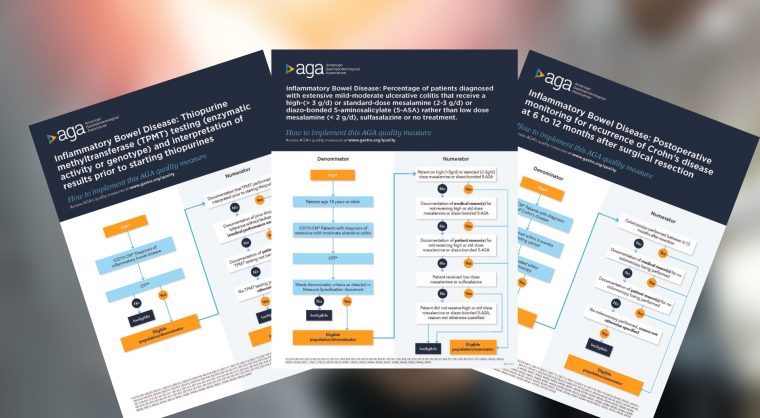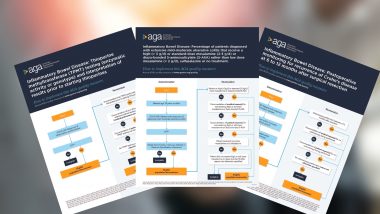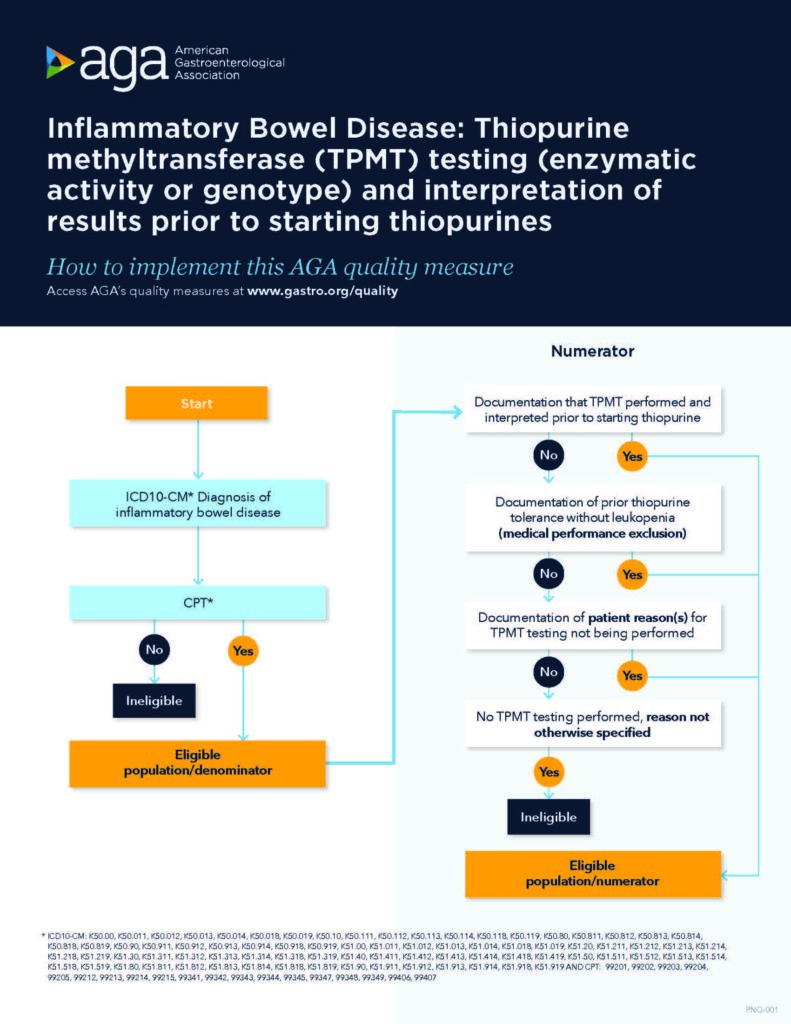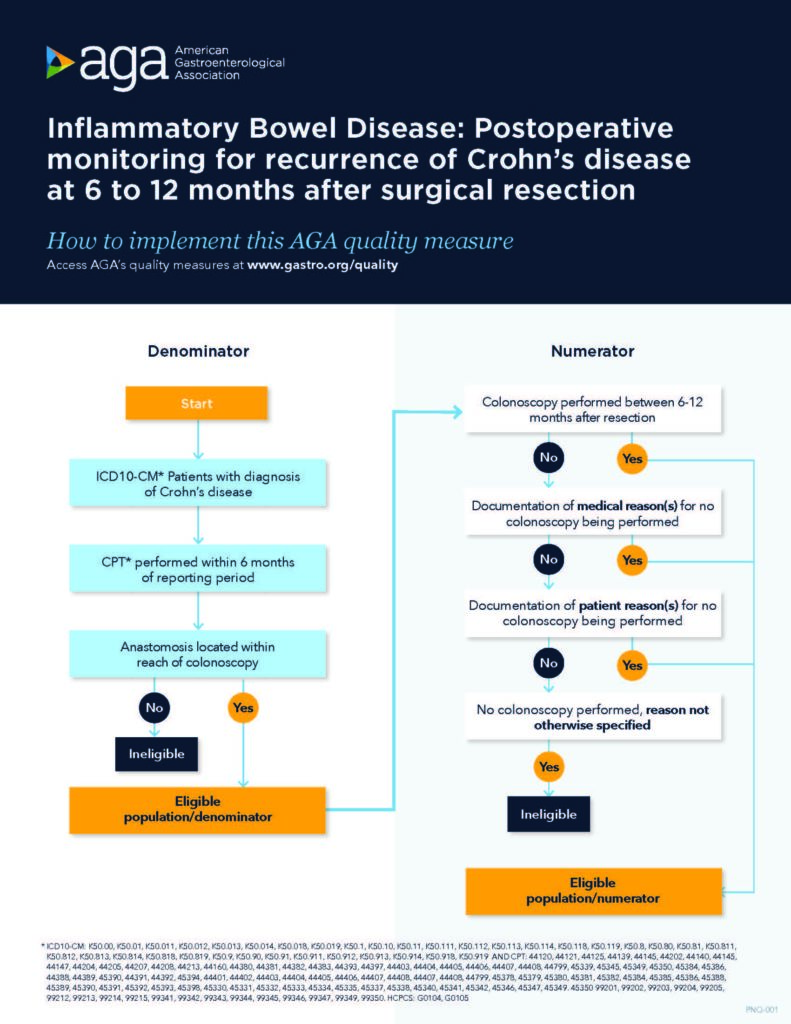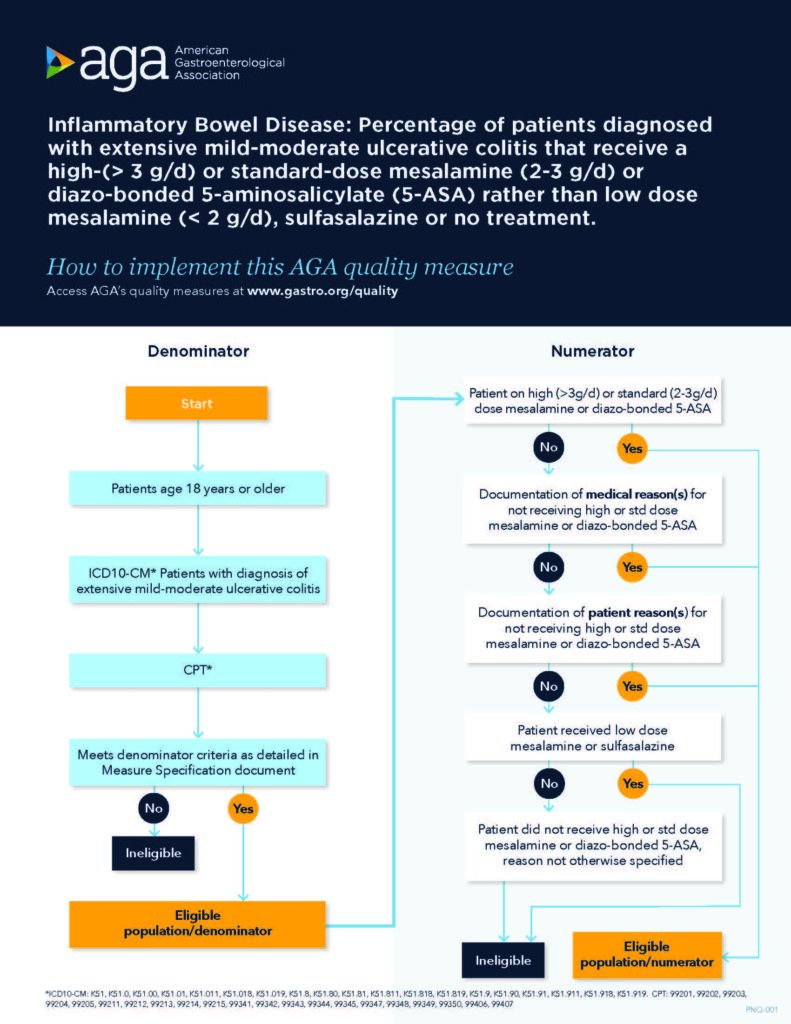Crohn’s disease and ulcerative colitis are chronic, relapsing inflammatory bowel diseases (IBDs). Treatment of IBD is directed at induction and maintenance of disease remission, to improve clinical symptoms, prevent disease-related complications and minimize treatment-related risk.
Based on AGA’s Inflammatory Bowel Disease clinical guidance, our quality team has developed three quality measures to guide you in providing high-quality IBD care.
Quality measures to track
Thiopurine methyltransferase (TPMT) testing (enzymatic activity or genotype) in all patients that was performed and results interpreted prior to starting azathioprine or 6 mercaptopurine. Providers should perform TPMT testing, documentation in the medical record, and interpretation prior to starting thiopurines.
Postoperative monitoring for recurrence of Crohn’s disease at six to 12 months after surgical resection in patients with Crohn’s disease. Providers should perform colonoscopy at six to 12 months following surgical resection in all patients with Crohn’s disease who have a surgical anastomosis within the reach of colonoscopy.
Percentage of patients diagnosed with mild-moderate ulcerative colitis that receive a high-(> 3 g/d) or standard- dose mesalamine (2-3 grams/d) or diazo-bonded 5-ASA rather than low dose mesalamine (< 2 g/d), sulfasalazine or no treatment. Providers should treat all patients with extensive mild to moderate ulcerative colitis receiving mesalamine therapy with high (>3 g/d) or standard (2-3 g/d) doses, diazo-bonded 5-ASA, or sulfasalazine (2-4 g/d) rather than low dose mesalamine.
Quantifiable process and outcome metrics to track
- Percentage of patients with a diagnosis of Inflammatory Bowel Disease who had TPMT testing performed and documentation in the medical record that results were interpreted prior to starting thiopurines.
- Percentage of patients with a diagnosis of Crohn’s Disease who were monitored by colonoscopy for recurrence between 6 months and 12 months after the date of surgical resection.
- Percentage of patients with a diagnosis of extensive mild-moderate ulcerative colitis receiving high dose mesalamine (>3gm/d) or standard dose mesalamine (2-3 grams/d) or diazo-bonded 5-ASA.










